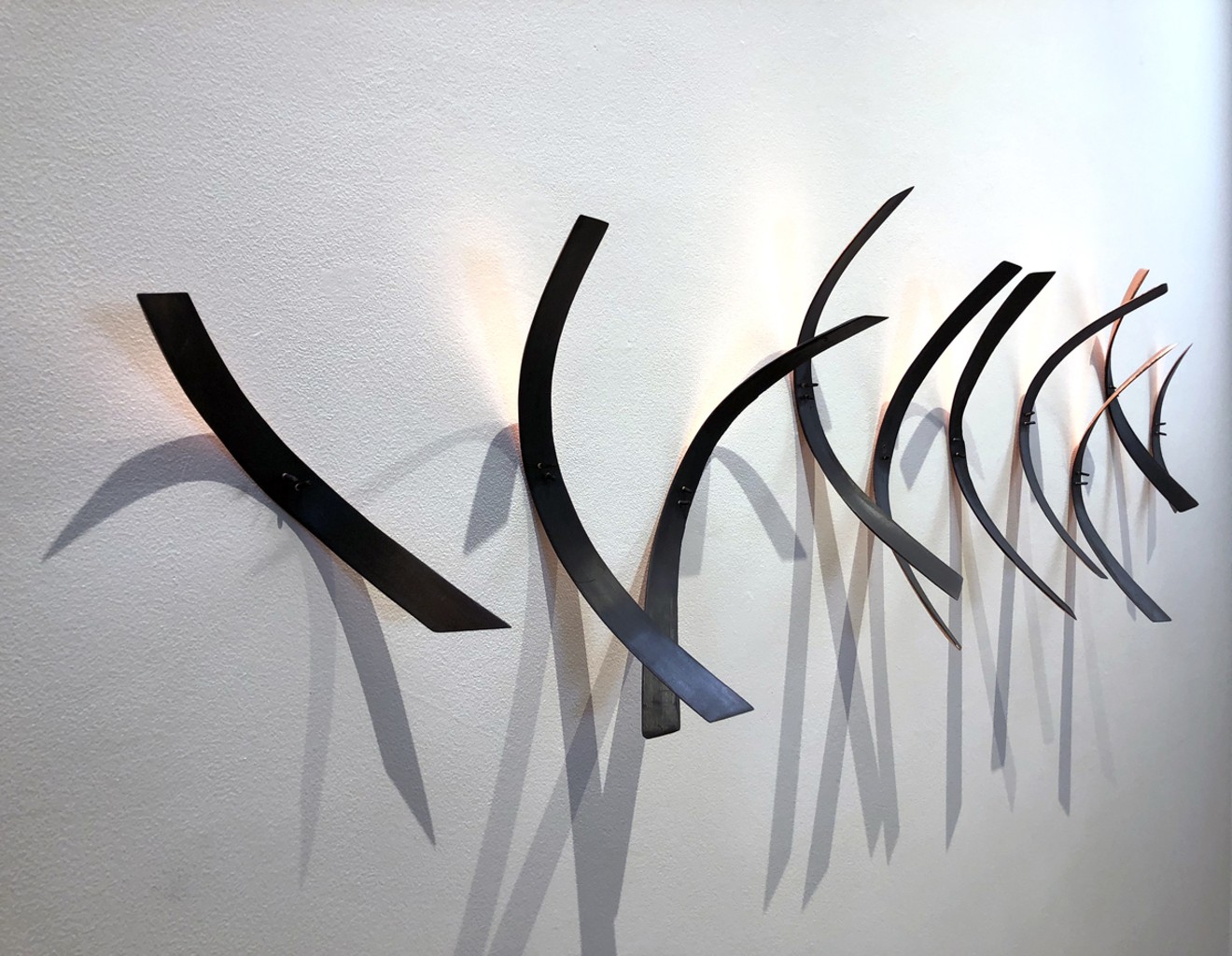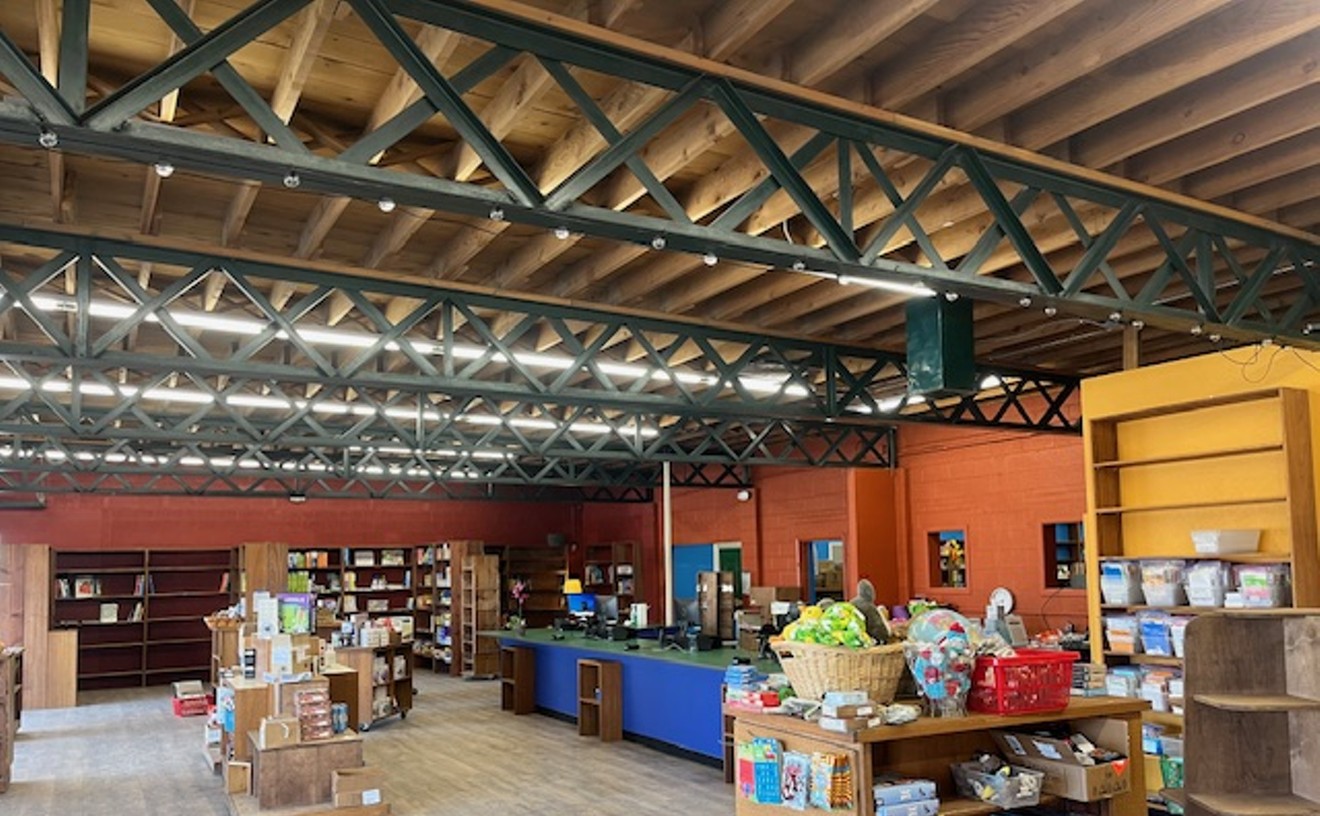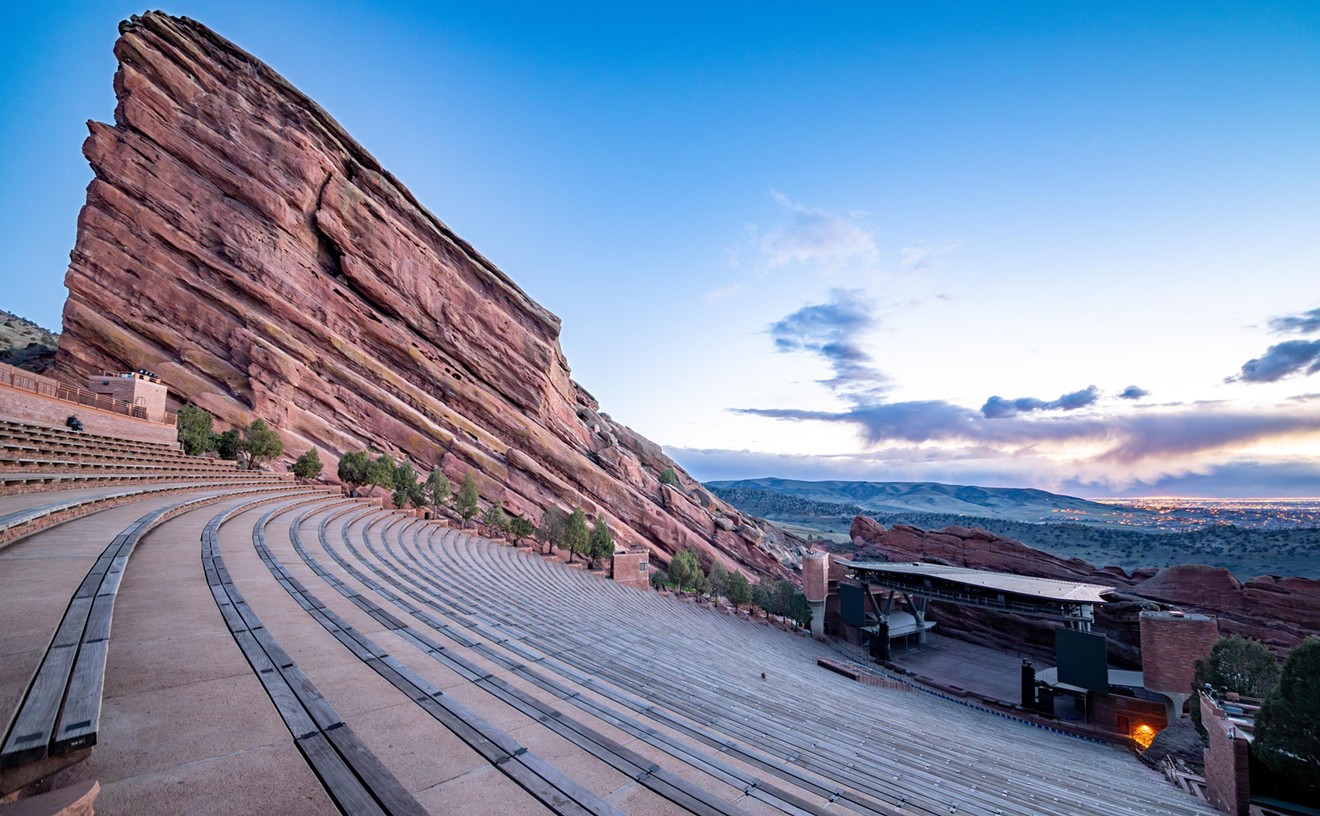A Colorado native, Marold attended the prestigious Rhode Island School of Design, earning a BFA in 1997. When I interviewed him recently at Goodwin, he explained that although he didn’t have any formal graduate study, he believes his apprenticeship with legendary earth artist Andy Goldsworthy was a comparable experience. Goldsworthy’s impact was extremely significant, he said, because it helped Marold shed all the design rules he’d been taught at RISD in order to get to the essence of his personal aesthetic interests, his concepts and his choice of materials.
Marold’s prominently sited public works include “Avian Front,” the sculptural fence that creates a barrier between the Denver Zoo and the rest of City Park. The piece is made of salvaged and rusting steel pipes that have been lined up to form an impenetrable wall; they’ve been cut and assembled so that while the top is rigidly horizontal, parts have been bent to describe undulating lines in three dimensions. His “Shadow Array,” installed in 2015 on the steep embankments on either side of the A Line tracks that lead into the train station at Denver International Airport, comprises 250 beetle-killed logs that have been jointed so that the narrow top part is positioned to run horizontally while the wider base of the log is set at an upward diagonal. The logs are raised above the ground on stands, and this relatively short distance from the earth allows them to cast dramatic shadows, both in the daylight and at night, through an elaborate custom lighting system. In a less high-profile location in Community Park at Boulevard One is “Sun Silo,” a tower made of thick rings of rusted steel that have been stacked on top of one another; the rings have various scalloped openings that allow the sun to shine through them. This piece relates to both “Avian Front” and “Shadow Array” — the former in terms of materials, the latter in its conceptual relationship to light.

Installation view of Patrick Marold: Astula at Goodwin Fine Art
Courtesy of the Artist and Goodwin Fine Art
One reason for that, as well as his more modest approach to these particular sculptures: Marold recently had to move his studio, a familiar situation for many local artists. For ten years he’d worked out of a large warehouse in north Denver, but spiraling rent increases finally drove him to leave the city proper and find a new spot in Wheat Ridge, where he grew up. Some of the sculptures at Goodwin are older ones that resurfaced during the move, including 2006’s “Charred Arcs,” a collection of maple strips that have been bent into semi-circular shapes and lined up horizontally across a wall to form a bas relief; the insides of the curves have been copper-leafed. Another older piece that Marold came across during the move is “Padre,” from 2013, a minimally carved beam set on end. Despite its simplicity and how little Marold altered it, the beam functions visually as an elegant obelisk.
Marold’s stock of materials at the old location also inspired pieces that he made at his new place. Some of these materials emerged during the move, such as those used in “Dual Arcs,” two curving slabs of maple nested in one another. Marold told me that he’d had the chunks of wood for a decade before he put them together last year. Though the piece is tabletop sized, it still has a colossal presence. Other pieces reflect the more intimate character of his new studio, including a group of pendular, wall-mounted (in one case ceiling-mounted) sculptures that, despite being made out of the heavy-duty materials of wood and metal, have a decidedly airy mood. Marold has suspended a vertical spire of wood before, and these newer pieces struck me as less substantial.
For “Astula Rosso, Cardinal Wedge,” Marold assembled a wedge out of small blocks of Engelmann spruce, stacking and joining them, then carving them with subtle linear abstract patterns. The blocks have been shaped so that when they are put together, they form a narrow triangle, with the point at the top of the wall and the wide base at the bottom; the piece hangs from an elegant metal hanger that attaches below the top of the point. One striking aspect of this work is the red-earth pigments that Marold has rubbed into the wood, giving it the look of some kind of tribal artifact. Marold achieves a similar effect in “Pierced Wedge,” but this time the narrow end of the triangular solid is at the bottom. It, too, has been rubbed with earth pigments and has a ruddy color.
A couple of the pieces in this show are unexpectedly luxurious by Marold’s standards. For “Bright Island,” he’s taken a chunk of charred maple in the shape of an inverted dome and covered the top with a sheet of sterling-silver leaf. Its form suggests a bowl, but the top is flat, so it can’t be filled with anything. Closely associated with this is “Tilted Basins,” two cuts from a maple log that are positioned close together, with the smaller slice above the larger one. Marold has covered the top surfaces of each thin slab with sheets of copper leaf.
This elegant show represents not only a clearing of the mind — and studio — for Marold, but it provides a breath of fresh air for viewers, too.
Patrick Marold: Astula, through July 21, Goodwin Fine Art, 1255 Delaware Street, 303-573-1255, goodwinfineart.com.













